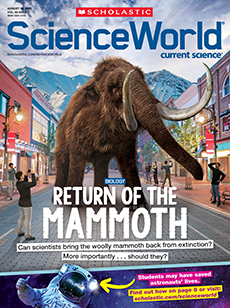In the late 1970s, scientists began discovering grisly scenes in the ponds and streams around Queensland, Australia. Entire populations of frogs were found floating dead in the waterways or strewn belly-up on shorelines—with their skin ripped to shreds. Over the next decade, scientists realized that the same mysterious phenomenon was occuring all around the world. In the late 1990s, the cause was finally identified: the chytrid fungus. This waterborne microbe infects the skin of frogs and other amphibians and usually proves fatal. For years, scientists struggled to find a way to stop the fungus from spreading.
Then, in 2001, Reid Harris, a biologist at James Madison University in Virginia, was watching a female four-toed salamander wiggle through her gelatinous eggs. He and other scientists knew this behavior passed on beneficial probiotic bacteria from the mother’s skin to her babies. The tiny microbes protect the developing salamanders from infections. Harris thought: Maybe similar bacteria could protect adult amphibians from chytrid. If so, it could put an end to the infection plaguing amphibians in nearly every corner of the globe.
In the late 1970s, scientists began finding horrible scenes around Queensland, Australia. Entire populations of frogs lay dead in the ponds and streams. The frogs were floating in the waterways or belly-up on shorelines. Their skin was ripped to pieces. Over the next decade, scientists realized that the same mystery was happening all around the world. In the late 1990s, they finally found the cause: the chytrid fungus. This microbe is carried by water. It infects the skin of frogs and other amphibians and usually kills them. For years, scientists searched for a way to stop the fungus from spreading.
Then, in 2001, Reid Harris had an idea. He’s a biologist at James Madison University in Virginia. As he watched, a female four-toed salamander wiggled through her jelly-like eggs. He and other scientists knew why she did this. She was passing on helpful probiotic bacteria from her skin to her babies. The tiny microbes protect the developing salamanders from infections. Harris wondered if similar bacteria could protect adult amphibians from chytrid. If so, it could end the infection killing amphibians worldwide.

